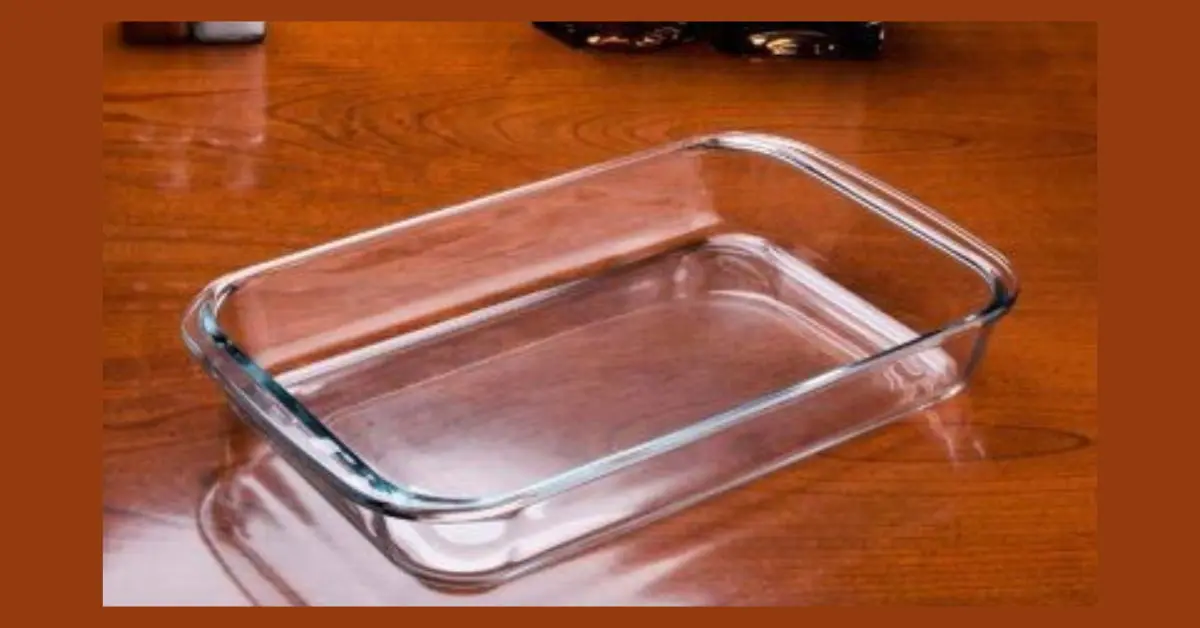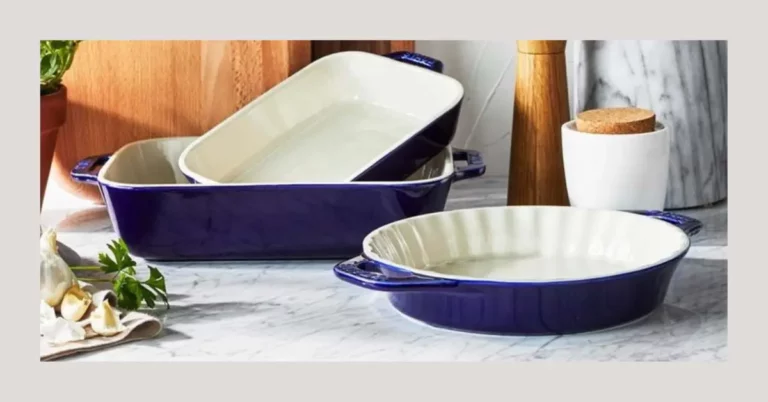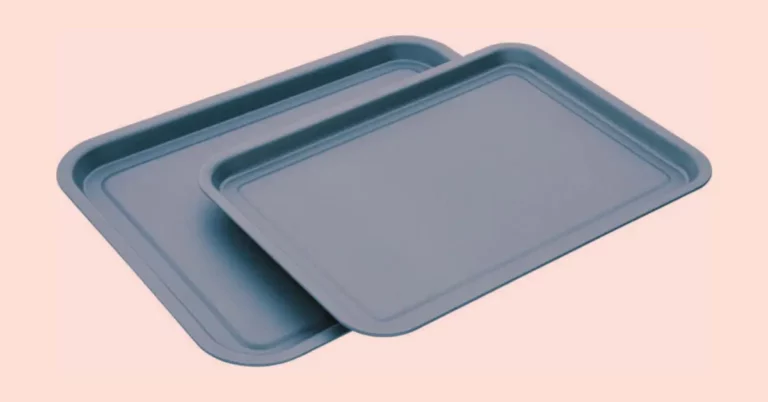Disclosure: As an Amazon associate, I may earn from qualifying purchases
If you are looking for a bit of expertise in the field of baking using glass bread pans, then you are at the right place. We’ve covered the basics in the previous page, and now it’s time to dive deeper.
As you embark on your bread-baking adventure, you might have a few burning questions. How do you ensure your bread doesn’t stick? What are the best baking techniques to achieve that perfect rise and texture? How do you adjust baking times and temperatures when using glass pans?
And let’s not forget about the various types of lids available and how they can enhance your baking experience. Don’t worry, we’ve got all the answers!
In this article, we’ll tackle these frequently asked questions head-on, providing you with valuable insights, tips, and tricks to unleash your inner baking maestro.
Baking bread is both a science and an art, and using glass bread pans adds an extra layer of excitement to the process. One of the most common concerns when using glass pans is the fear of bread sticking to the surface.
But fear not! We’ll guide you through the art of greasing your glass pans properly, ensuring easy release every time. Plus, we’ll share some ingenious tips and techniques for achieving that picture-perfect loaf with a golden crust and a soft, fluffy interior.
But it doesn’t stop there. Baking times and temperatures can vary when using glass pans, as they conduct and retain heat differently than their metal counterparts. We have attempted to provide you with some guidelines in this article, for baking your bread to perfection.
Whether you’re making a classic white loaf, a crusty artisanal boule, or even experimenting with gluten-free or whole grain recipes, we’ve got you covered.
These specialized molds can create beautiful shapes, such as round loaves or traditional baguettes, adding a touch of elegance to your baking creations. We’ll discuss the different types of lids available that will help create a crispy crust.
By the end of this article, we hope to have answered most of the pressing questions regarding glass baking dishes and you’ll be equipped to create artisan-quality bread using these. So roll up your sleeves, preheat your oven, and get started!
As you embark on your bread-baking adventure, you might have a few burning questions. How do you ensure your bread doesn’t stick? What are the best baking techniques to achieve that perfect rise and texture? How do you adjust baking times and temperatures when using glass pans?
And let’s not forget about the various types of lids available and how they can enhance your baking experience. Don’t worry, we’ve got all the answers!
In this article, we’ll tackle these frequently asked questions head-on, providing you with valuable insights, tips, and tricks to unleash your inner baking maestro.
Baking bread is both a science and an art, and using glass bread pans adds an extra layer of excitement to the process. One of the most common concerns when using glass pans is the fear of bread sticking to the surface.
But fear not! We’ll guide you through the art of greasing your glass pans properly, ensuring easy release every time. Plus, we’ll share some ingenious tips and techniques for achieving that picture-perfect loaf with a golden crust and a soft, fluffy interior.
But it doesn’t stop there. Baking times and temperatures can vary when using glass pans, as they conduct and retain heat differently than their metal counterparts. We have attempted to provide you with some guidelines in this article, for baking your bread to perfection.
Whether you’re making a classic white loaf, a crusty artisanal boule, or even experimenting with gluten-free or whole grain recipes, we’ve got you covered.
These specialized molds can create beautiful shapes, such as round loaves or traditional baguettes, adding a touch of elegance to your baking creations. We’ll discuss the different types of lids available that will help create a crispy crust.
By the end of this article, we hope to have answered most of the pressing questions regarding glass baking dishes and you’ll be equipped to create artisan-quality bread using these. So roll up your sleeves, preheat your oven, and get started!
Frequently Asked Questions
Can you bake in a glass pan at 400 degrees?
Yes, you can bake in a glass pan at 400 degrees Fahrenheit.
However, it’s important to note that glass pans may take longer to heat up and cool down compared to metal pans, so you may need to adjust your baking time accordingly.
It is always a good idea to refer to the manufacturer’s instructions for any specific recommendations for the glass pan you are using.
However, it’s important to note that glass pans may take longer to heat up and cool down compared to metal pans, so you may need to adjust your baking time accordingly.
It is always a good idea to refer to the manufacturer’s instructions for any specific recommendations for the glass pan you are using.
Can you bake at 350 in a glass pan?
Yes, you can bake at 350 degrees Fahrenheit in a glass pan.
However, it is important to note that glass conducts heat differently than metal, so you may need to adjust your baking time and temperature accordingly.
It is recommended to reduce the oven temperature by 25 degrees Fahrenheit when using a glass pan, and to increase the baking time by 5-10 minutes, or until the bread is fully baked and the internal temperature reaches at least 190-200 degrees Fahrenheit.
It is also important to note that sudden temperature changes can cause glass to shatter, so it is important to avoid placing a cold glass pan into a preheated oven or placing a hot glass pan on a cool surface.
However, it is important to note that glass conducts heat differently than metal, so you may need to adjust your baking time and temperature accordingly.
It is recommended to reduce the oven temperature by 25 degrees Fahrenheit when using a glass pan, and to increase the baking time by 5-10 minutes, or until the bread is fully baked and the internal temperature reaches at least 190-200 degrees Fahrenheit.
It is also important to note that sudden temperature changes can cause glass to shatter, so it is important to avoid placing a cold glass pan into a preheated oven or placing a hot glass pan on a cool surface.
Do glass pans take longer to bake?
Yes, glass pans can take longer to bake than metal pans. This is because glass is a poorer conductor of heat than metal, so it takes longer for the heat to reach the center of the glass pan and for the food to cook.
As a result, you may need to add a few extra minutes to the baking time when using a glass pan. You may also need to adjust the oven temperature slightly to compensate for the slower cooking time.
As a result, you may need to add a few extra minutes to the baking time when using a glass pan. You may also need to adjust the oven temperature slightly to compensate for the slower cooking time.
Should I preheat a glass pan in the oven?
It is generally recommended to preheat a glass pan in the oven before baking to ensure even baking and prevent cracking.
Glass has a slower heat transfer rate than metal, so it may take longer for the pan to heat up.
However, it is always a good idea to follow the specific instructions for your recipe to achieve the best results.
Glass has a slower heat transfer rate than metal, so it may take longer for the pan to heat up.
However, it is always a good idea to follow the specific instructions for your recipe to achieve the best results.
Can I bake with a glass lid in the oven?
It depends on the type of glass lid you have.
Some glass lids are oven-safe and can be used for baking, while others are not designed for high-heat cooking and can shatter or break in the oven. To be sure, check the manufacturer’s instructions or look for information on the packaging to see if the glass lid is oven-safe.
If you’re unsure, it’s best to use an alternative method for covering your baking dish, such as aluminum foil or a metal lid.
Some glass lids are oven-safe and can be used for baking, while others are not designed for high-heat cooking and can shatter or break in the oven. To be sure, check the manufacturer’s instructions or look for information on the packaging to see if the glass lid is oven-safe.
If you’re unsure, it’s best to use an alternative method for covering your baking dish, such as aluminum foil or a metal lid.
What are the tips for baking with glass pans?
- Adjust baking time: Glass pans may take longer to heat up and cool down than metal pans, so you may need to adjust your baking time accordingly.
- Preheat the oven: It’s a good idea to preheat your oven for at least 10-15 minutes before putting your glass pan inside to ensure even heating.
- Use a light-colored glass pan: Dark-colored glass pans can cause your bread to over-brown or burn on the bottom. It’s best to use a light-colored glass pan to prevent this.
- Grease the pan: Greasing the glass pan with butter or oil can help prevent sticking. You can also use parchment paper or a silicone baking mat.
- Avoid sudden temperature changes: Glass can be sensitive to sudden temperature changes, so avoid placing a hot glass pan directly onto a cold surface or putting a cold glass pan into a hot oven.
- Use oven mitts: Glass pans can retain heat for a long time, so be sure to use oven mitts when handling them.
- Allow the bread to cool: Let the dough cool in the pan for a few minutes before removing it to prevent it from sticking or breaking apart.
Can I put a cold glass pan in oven?
No, it’s not recommended to put a cold glass pan in a preheated oven. Extreme temperature changes can cause the glass to shatter or break.
It’s recommended to let it come to room temperature before placing it in a preheated oven.
It’s recommended to let it come to room temperature before placing it in a preheated oven.
Can I put a frozen glass pan in a hot oven?
No, it is not recommended to put a frozen glass pan in a hot oven. Rapid temperature changes can cause the glass to crack or shatter, which can be dangerous.
It is best to thaw the glass pan first before placing it in the oven.
It is generally recommended to avoid subjecting glass bakeware to extreme temperature changes to prevent breakage.
It is best to thaw the glass pan first before placing it in the oven.
It is generally recommended to avoid subjecting glass bakeware to extreme temperature changes to prevent breakage.
Can Corningware go in the oven with glass lid?
Yes, CorningWare can go in the oven with its glass lid, as long as both the dish and the lid are oven-safe.
CorningWare is designed to be used in the oven, microwave, and stovetop, and the glass lids are made to withstand high temperatures as well.
However, it’s important to check the manufacturer’s instructions for specific temperature limits and usage recommendations for your particular CorningWare set to ensure proper use and avoid damage.
CorningWare is designed to be used in the oven, microwave, and stovetop, and the glass lids are made to withstand high temperatures as well.
However, it’s important to check the manufacturer’s instructions for specific temperature limits and usage recommendations for your particular CorningWare set to ensure proper use and avoid damage.
Can you put Pyrex glass lid in oven?
Yes, Pyrex glass lids are generally safe to use in the oven as long as they are oven-safe and designed to withstand the heat.
However, it is important to check the manufacturer’s instructions or labeling to ensure that the lid is safe to use at the temperature you will be baking at.
It is also recommended to avoid sudden temperature changes, such as placing a cold glass lid in a hot oven or placing a hot glass lid on a cold surface, as this can cause the glass to crack or shatter.
However, it is important to check the manufacturer’s instructions or labeling to ensure that the lid is safe to use at the temperature you will be baking at.
It is also recommended to avoid sudden temperature changes, such as placing a cold glass lid in a hot oven or placing a hot glass lid on a cold surface, as this can cause the glass to crack or shatter.
What is the best pan to bake banana bread in?
Here are some common choices that may work well with baking banana bread:
- Loaf Pan: A 9×5-inch or 8×4-inch loaf pan is a classic choice for baking banana bread. Look for a heavy-gauge metal pan with a nonstick coating for easy release.
- Bundt Pan: A bundt pan can give your banana bread a pretty and decorative shape. Look for a 9- or 10-cup bundt pan with a nonstick coating.
- Muffin Tin: You can also bake the banana dough in muffin tins for individual portions. Look for a standard 12-cup muffin tin or a jumbo 6-cup muffin tin.
- Mini Loaf Pan: If you want to make smaller loaves, a mini loaf pan is a good choice. Look for a 4×2.5-inch mini loaf pan.
Why did my glass pan break in the oven?
There could be several reasons why a glass pan may break in the oven:
To avoid glass pans from breaking in the oven, it’s important to:
- Temperature shock: Glass can break due to a sudden change in temperature. If you take a cold glass pan and put it directly in a hot oven, or vice versa, the sudden temperature change can cause the glass to crack or break.
- Uneven heating: If the oven temperature is not distributed evenly, it can cause the glass to heat up unevenly, leading to hot spots that can cause the glass to break.
- Scratches or cracks: If the baking dish has any cracks or scratches, it can weaken the structure of the glass and make it more prone to breaking in the oven.
- Poor quality glass: If the bakeware is made of poor quality glass, it may not be able to withstand high temperatures and may thus, shatter in the oven.
To avoid glass pans from breaking in the oven, it’s important to:
- Avoid temperature shock by letting the kitchenware come to room temperature before putting it in the oven or preheating the oven before putting the pan in.
- Use a high-quality, oven-safe glass dish.
- Place the wares on a baking sheet to distribute the heat more evenly.
- Avoid using metal utensils on the pan that can scratch the surface.




